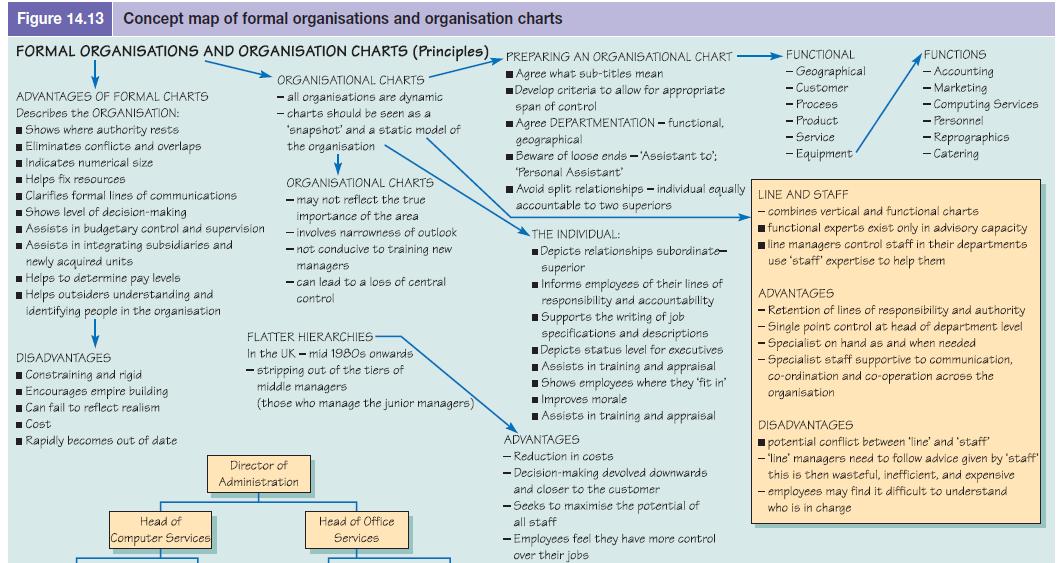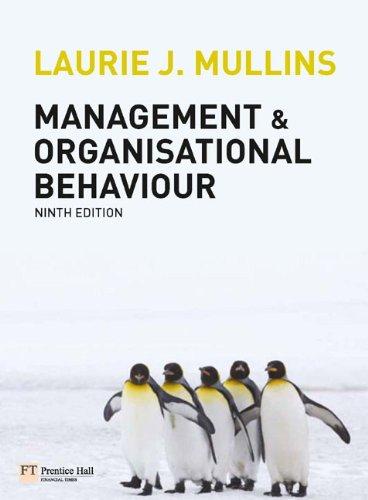Question:
The retail fashion industry is probably one of the most fast-moving and fickle businesses that can be imagined. The whole process of predicting next season’s colours, fabrics, styles and hemlines is partly determined by the creativity of the major fashion designers; and the reports from the catwalk shows of Paris, Milan or London are expected to set a trend six months or so ahead. The reality of what most people buy, however, is usually more mundane than the fantastic, occasionally shocking, items that parade before the assembled press and celebrities at the spring or autumn shows. On the high street, sales of a genuinely trendy item can be hit dramatically by such uncontrollable factors as the weather, and demand is easily influenced by the whims of celebrities, or even politicians’ wives (Michelle Obama is the subject of a dedicated website ‘Mrs O’ that follows her every fashion move)
Your tasks
1. Analyse Zara’s structure in relation to the ‘Interrelated levels of organisation’ diagram at Figure 14.3. How does it match, and how does it differ from the model?
2. Critically assess Zara’s structure against each of Urwick’s principles of organisation.
3. Organisations could be said to sit somewhere along a continuum between complete vertical integration, that is in-house control of all aspects of the operation, and complete outsourcing, that is externalisation of all operational aspects with the core acting as a co-ordinating agent. What are the advantages and disadvantages of each structure in terms of responsiveness, resilience and efficiency?
4. How transferable is the Zara model to non-business sectors? Discuss this in relation to either a public sector operation (such as an NHS hospital) or a not-for-profit one.

Transcribed Image Text:
Figure 14.13 Concept map of formal organisations and organisation charts
FORMAL ORGANISATIONS AND ORGANISATION CHARTS (Principles) PREPARING AN ORGANISATIONAL CHART
Agree what sub-titles mean
Develop criteria to allow for appropriate
span of control
Agree DEPARTMENTATION - functional,
geographical
Beware of loose ends-'Assistant to';
Personal Assistant'
ADVANTAGES OF FORMAL CHARTS
Describes the ORGANISATION:
Shows where authority rests
■Eliminates conflicts and overlaps
Indicates numerical size
Helps fix resources
Clarifies formal lines of communications.
Shows level of decision-making
Assists in budgetary control and supervision
Assists in integrating subsidiaries and
newly acquired units
■Helps to determine pay levels
Helps outsiders understanding and
identifying people in the organisation
DISADVANTAGES
Constraining and rigid
■ Encourages empire building
Can fail to reflect realism
Cost
Rapidly becomes out of date
Head of
Computer Services
ORGANISATIONAL CHARTS
all organisations are dynamic
charts should be seen as a
'snapshot' and a static model of
the organisation
ORGANISATIONAL CHARTS
may not reflect the true.
importance of the area
- involves narrowness of outlook
-not conducive to training new.
managers.
-can lead to a loss of central.
control
FLATTER HIERARCHIES
In the UK - mid 1980s onwards
- stripping out of the tiers of
middle managers
(those who manage the junior managers)
Director of
Administration
Head of Office
Services.
Avoid split relationships - individual equally LINE AND STAFF
accountable to two superiors
THE INDIVIDUAL:
■Depicts relationships subordinate
superior
■Informs employees of their lines of
responsibility and accountability
■Supports the writing of job
specifications and descriptions
■Depicts status level for executives
Assists in training and appraisal
■Shows employees where they 'fit in'
■Improves morale
Assists in training and appraisal
ADVANTAGES
- Reduction in costs
FUNCTIONAL
-Geographical
- Customer
- Process
- Product
- Service
- Equipment
- Decision-making devolved downwards
and closer to the customer
Seeks to maximise the potential of
all staff
-Employees feel they have more control
over their jobs
FUNCTIONS
- Accounting
- Marketing
- Computing Services
Personnel
- Reprographics
- Catering
- combines vertical and functional charts.
functional experts exist only in advisory capacity
■line managers control staff in their departments
use 'staff' expertise to help them
ADVANTAGES
- Retention of lines of responsibility and authority
- Single point control at head of department level
- Specialist on hand as and when needed
Specialist staff supportive to communication,
co-ordination and co-operation across the
organisation
DISADVANTAGES
potential conflict between 'line' and 'staff'
- 'line' managers need to follow advice given by 'staff
this then wasteful, inefficient, and expensive
- employees may find it difficult to understand
who is in charge








